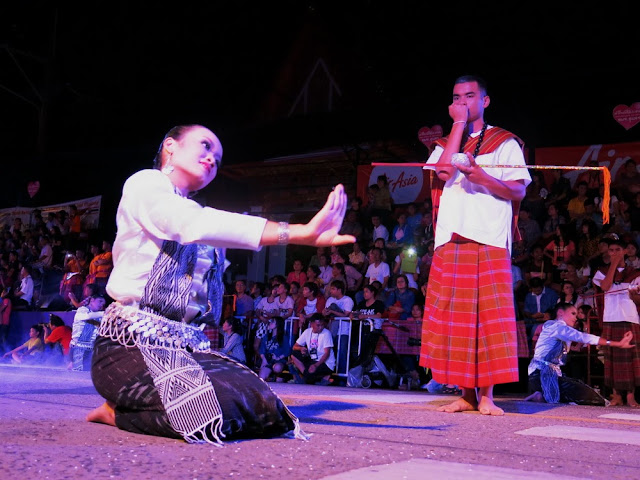Within Isaan or Thailand’s northeastern region, mo lam music is the soul and water for life for the locals. Just like fish cannot live without water, it’s hard to imagine Isaan people’s routine activities - whether it be work on paddies, rituals, or just entertainment - without the sound of these folksongs.
During our visit to Thailand’s northeastern Amnatcharoen province, we were invited to a village which offers mo lam shows and has set itself as a mo lam music learning center. This is where the fun began.
We were greeted by the smiley Mr Rianchai. A day time school teacher, he’s the founder of the center and Baan Pla Kow mo lam band. The performers, pretty in their traditional costumes, were ready to start their first show.
One thing special about Baan Pla Kow band is there are only 2 generations of performers: the young and the old. The kids are encouraged to spend free time learning and practicing mo lam taught by the elders who have taken a life time earning skills and reputation as mo lam song writers, singers, and musicians. This assures such form of art is passed on, and also allows kids to spend more time with the elders which, sadly, is what they are doing less these days.
Accompanied by can or a reed mouth organ, drums, and a guitar-like instrument called pin, mo lam songs can talk about anything from the beauty of nature, folk tales, morality, history, and even used as conversations between lovers. Slow rhythms go with sad or disappointing stories while faster songs match with light-hearted context. But for these kids who are worry-free and are probably too young to flirt with each other, they chose to sing about the 10 must-do good kids’ behaviors and about their play time looking for shells in rice fields instead.
The kids explained that they choose mo lam as a selective class in school and they rehearse more over weekends. They are too young to write their own songs but they wish to do that some day.
Next on the stage was the elders’ turn. I have to admit! The beat is just irresistible!
The highlight of the elders’ show must be the uncle who incorporated the sound of birds and animals in his song. I think he did pretty well imitating the sound of a pigeon.
"Visitors and foreigners might not understand what we sing about, but the fun beat of mo lam is enough to make them get up and dance. It will be more fun if they understand Isaan language of course, like in mo lam klawn, a vocal battle between male and female mo lam singers which requires improvising. It's getting harder to find singers who can improvise well these days. That's why we will never give up our job as long as we still have energy to sing," said the auntie singer.
-----
If you have more time, try spending a few nights in
homestays available around the village, hang out and learn about Isaan
village’s slow pace of life. A rustic
homestay with simple facilities can host up 8 people for maximum 300 baht per
night per person. Or you can opt for a package which includes the village and
nearby attraction tours, meals, and mo lam performance.
-----
On
our way back to town from the village, we stopped at Phra Lao Thepnimit Temple
known to be hosting the most beautiful Buddha statue in Amnatcharoen province.
And
seeing it with our own eyes, the saying can’t be wrong. Almost 3 meters tall
and wide, the Buddha statue belongs to the 17th century and features
the heavy influence of Lan Chang or Laotian art brought by the very first
settlers in this area.
Watch the story's video: http://www.youtube.com/watch?v=mz57J_RDWHM
See more images of the story: http://www.flickr.com/photos/92886568@N08/sets/72157634661999550/
Send me comments: https://www.facebook.com/suwida.boonyatistarn.1























